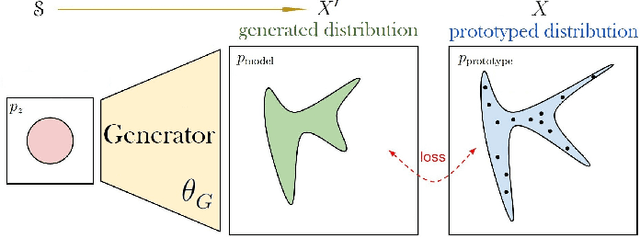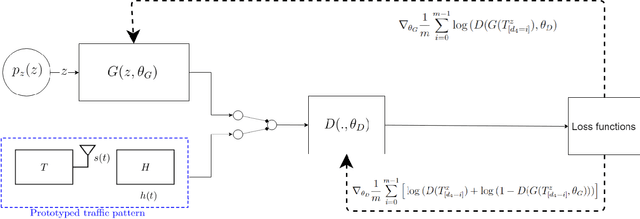Haythem Chaker
Large-Scale Beam Placement and Resource Allocation Design for MEO-Constellation SATCOM
Mar 11, 2023



Abstract:This paper presents a centralized framework for optimizing the joint design of beam placement, power, and bandwidth allocation in an MEO satellite constellation to fulfill the heterogeneous traffic demands of a large number of global users. The problem is formulated as a mixed integer programming problem, which is computationally complex in large-scale systems. To overcome this challenge, a three-stage solution approach is proposed, including user clustering, cluster-based bandwidth and power estimation, and MEO-cluster matching. A greedy algorithm is also included as a benchmark for comparison. The results demonstrate the superiority of the proposed algorithm over the benchmark in terms of satisfying user demands and reducing power consumption.
Joint Linear Precoding and DFT Beamforming Design for Massive MIMO Satellite Communication
Nov 16, 2022



Abstract:This paper jointly designs linear precoding (LP) and codebook-based beamforming implemented in a satellite with massive multiple-input multiple-output (mMIMO) antenna technology. The codebook of beamforming weights is built using the columns of the discrete Fourier transform (DFT) matrix, and the resulting joint design maximizes the achievable throughput under limited transmission power. The corresponding optimization problem is first formulated as a mixed integer non-linear programming (MINP). To adequately address this challenging problem, an efficient LP and DFT-based beamforming algorithm are developed by utilizing several optimization tools, such as the weighted minimum mean square error transformation, duality method, and Hungarian algorithm. In addition, a greedy algorithm is proposed for benchmarking. A complexity analysis of these solutions is provided along with a comprehensive set of Monte Carlo simulations demonstrating the efficiency of our proposed algorithms.
Generative Adversarial Networks for Pseudo-Radio-Signal Synthesis
Jun 29, 2022



Abstract:For many wireless communication applications, traffic pattern modeling of radio signals combined with channel effects is much needed. While analytical models are used to capture these phenomena, real world non-linear effects (e.g. device responses, interferences, distortions, noise) and especially the combination of such effects can be difficult to capture by these models. This is simply due to their complexity and degrees of freedom which can be hard to explicitize in compact expressions. In this paper, we propose a more model-free approach to jointly approximate an end-to-end black-boxed wireless communication scenario using software-defined radio platforms and optimize for an efficient synthesis of subsequently similar 'pseudo-radio-signals'. More precisely, we implement a generative adversarial network based solution that automatically learns radio properties from recorded prototypes in specific scenarios. This allows for a high degree of expressive freedom. Numerical results show that the prototypes' traffic patterns jointly with channel effects are learned without the introduction of assumptions about the scenario or the simplification to a parametric model.
 Add to Chrome
Add to Chrome Add to Firefox
Add to Firefox Add to Edge
Add to Edge